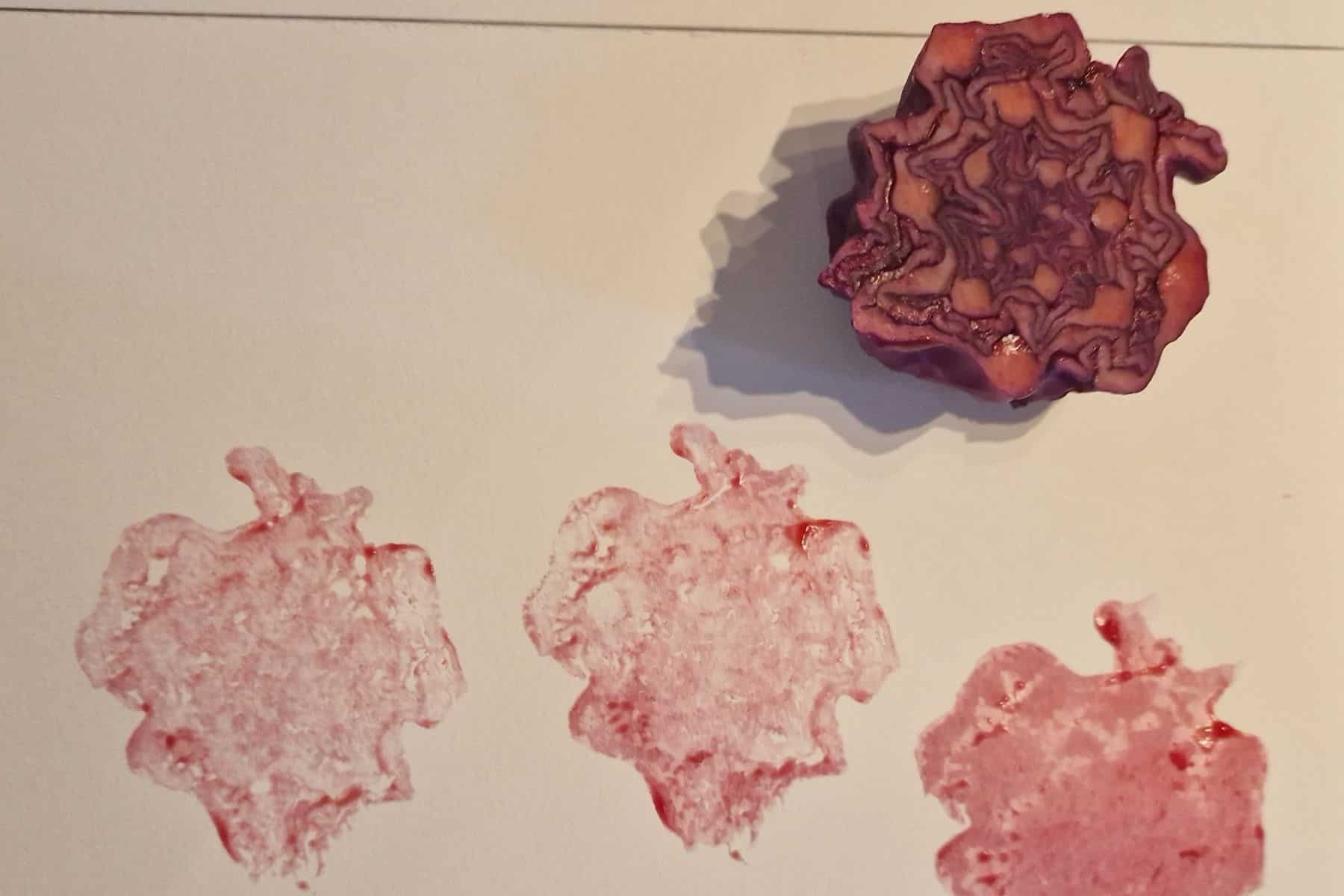The Wild Classroom Project: Food
The Wild Classroom Project: Food 2023
Stanhope Street Primary School, Dublin 7
Black Church Print Studios artists Caroline Byrne and Siobhán Cox worked on the Wild Classroom project with 1st and 2nd class pupils from Stanhope Primary School in Stoneybatter Dublin 7.
The Wild Classroom project was inspired by an old European folktale called “Stone Soup” which is about food and bringing people together.
Project Artists shared contemporary art practice with pupils and worked with a collaborative focus, generating ideas with the group to form a collaborative artwork.
The artists made vegetable and fruit ink with the children, and used this ink to print onto paper using stamps made from various vegetables.


Session 1: Sowing the seeds.
In March when the pupils were in 1st class, they were introduced to the “Stone Soup” folktale. In this story, a hungry stranger visiting a village is told that that is no food for them to eat. The stranger replies that if they had a pot of water on a fire, they could make stone soup. The people in the village are intrigued, and put a pot of water on to boil on a fire. The stranger puts a stone into the pot of boiling water, dips a finger into the pot and says that it is tasty but could do with an onion being added. A villager who has a spare onion throws one into the pot. The stranger says that it is delicious but needs a carrot. Another villager retrieves a spare carrot from their house and throws it into the pot. This process repeats with various foodstuffs being added to the pot until a hearty stew is bubbling away on the fire. The stranger and the villagers then share this meal together. This folktale taught the children about people contributing towards a common goal, as well as the importance of collaboration.
The children then sowed various vegetable seeds such as potatoes, cabbage, and beetroot which they would then harvest later on in the year.
Session 2 – Making inks.
The children explored how to make ink from the vegetables they had grown, as well as from fruits foraged from hedgerows. They cut up beetroot into chunks, put them into a pot of water, and watched as the dye from the beetroot turned the water red. The children also made ink from haws, red cabbage, and blackberries.
BLACK CHURCH PRINT STUDIO
4 Temple Bar
Dublin 2, D02 YK53
Tel: (353) 1 677 3629
Email: [email protected]
Design by Webtank
Black Church Print Studio
4 Temple Bar
Dublin 2, D02 YK53
Tel: (353) 1 677 3629
Email: [email protected]
Supported by



Design by Webtank

















